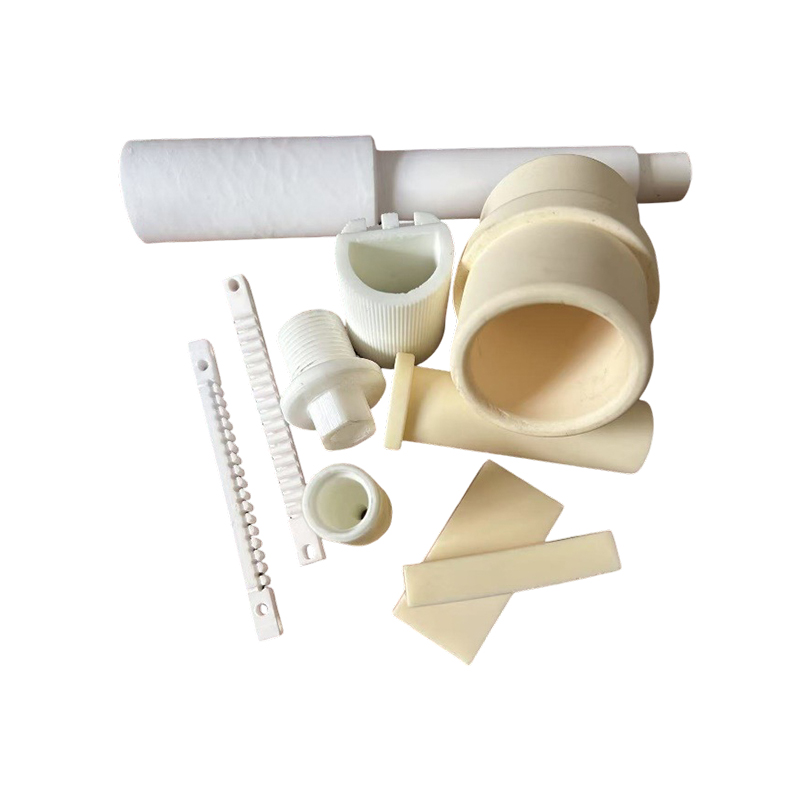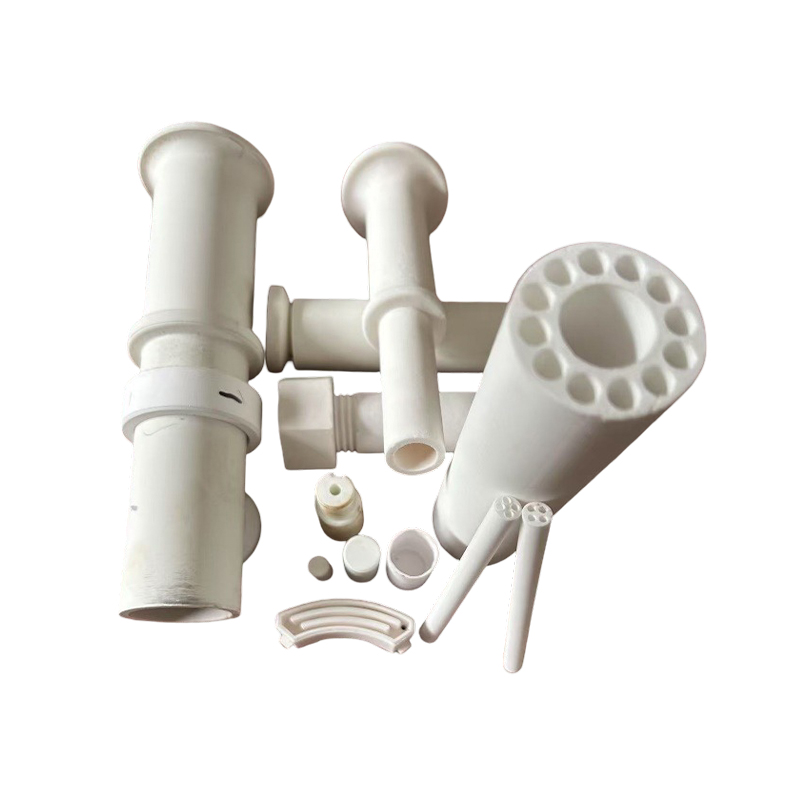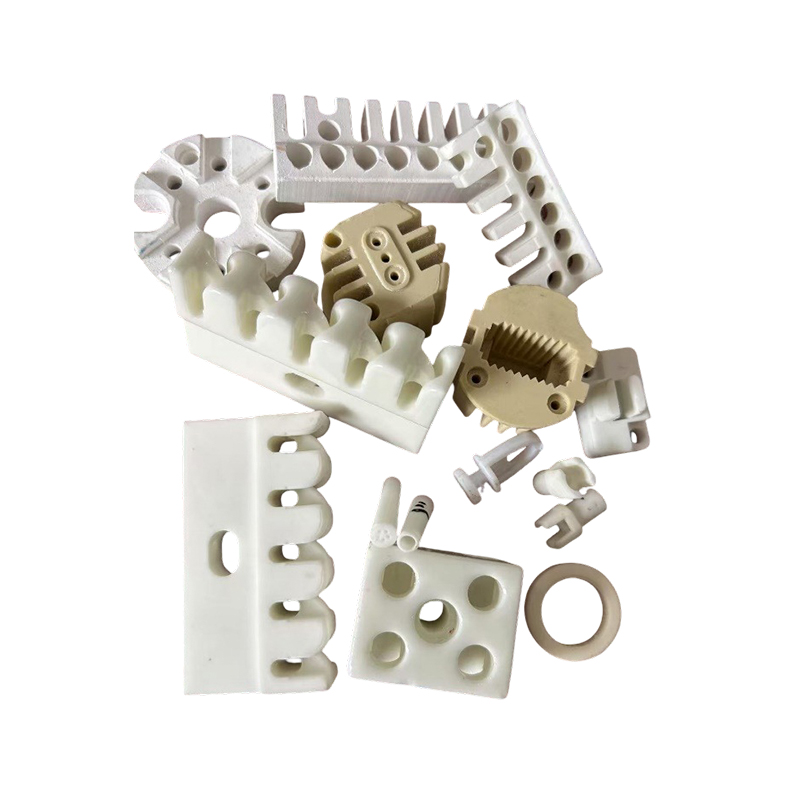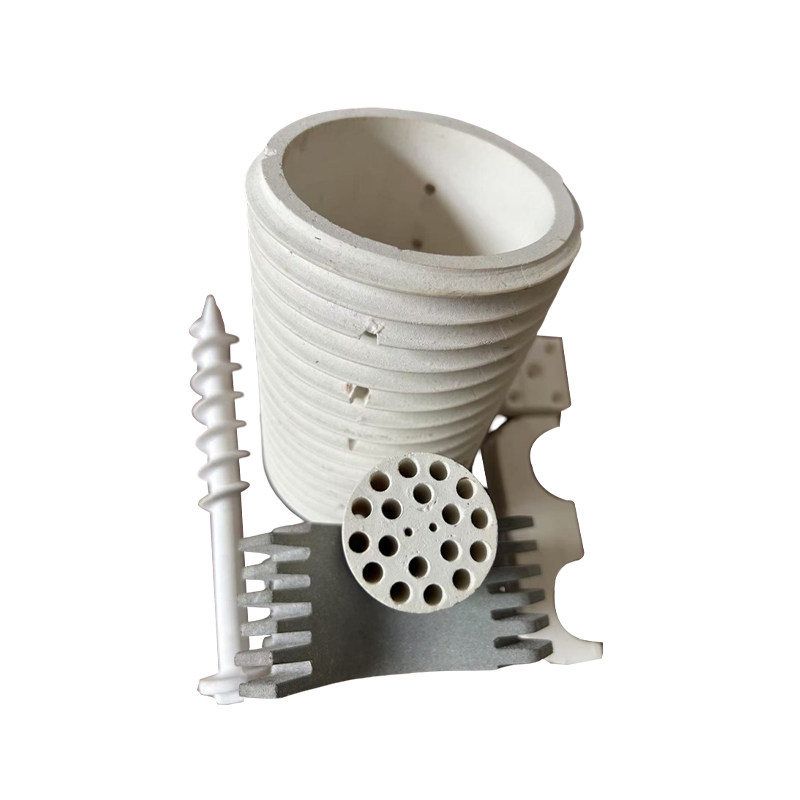How do high-frequency ceramics maintain excellent insulation properties under high voltage environments and effectively prevent electrical breakdown?
Release Time : 2025-09-04
In modern power systems, communications equipment, and advanced electronic technologies, high-frequency ceramics are a key functional material, widely used in core components such as high-voltage insulators, vacuum circuit breakers, microwave devices, radar systems, and ignition systems. One of their core advantages is their ability to maintain excellent insulation performance even under high voltage conditions, effectively preventing electrical breakdown and ensuring safe and stable equipment operation. This characteristic stems from their unique material structure, physical properties, and chemical stability, making them an irreplaceable insulating material in the high-voltage and high-frequency fields.
1. Dense Structure and High Resistivity: Building an Insulation Barrier
High-frequency ceramics are typically made from high-purity alumina, steatite, zirconia, or other specialty ceramics, and are produced through a high-temperature sintering process. They exhibit extremely high density and very low porosity. This dense microstructure effectively blocks the formation of conductive pathways, leaving virtually no freely moving ions or electrons within the material. High-frequency ceramics also possess extremely high volume resistivity, maintaining extremely low leakage current even under strong electric fields. This high resistance is their first line of defense against electrical breakdown, ensuring that current cannot easily penetrate the material when high voltage is applied, thereby maintaining a stable insulation state.
2. High Dielectric Strength: The Core Capability for Resisting Electrical Breakdown
Dielectric strength is a key indicator of the voltage resistance of an insulating material. It refers to the maximum voltage that a material can withstand per unit thickness without breakdown. High-frequency ceramics typically boast a dielectric strength of 10–30 kV/mm, significantly higher than most organic insulating materials. This means that even in extremely high-voltage environments, such as insulators in power transmission and distribution systems or high-voltage switchgear, high-frequency ceramics effectively isolate electrodes, preventing ionization and spark discharges within the air or the material. Their high dielectric strength stems from the strong ionic and covalent bonds within the material, making it difficult for electrons to be "pulled out" by the electric field, forming a conductive electron avalanche. This significantly improves resistance to electrical breakdown.
3. Excellent Arc Resistance: Prevents Failure Caused by Localized Ablation
High-voltage switch operation or short-circuit faults often produce arcing. The arc temperature is extremely high, melting metals and carbonizing organic insulating materials, permanently degrading insulation performance. High-frequency ceramics are also known to be resistant to arcing. Ceramics are extremely resistant to arc erosion and are not easily burned or carbonized by arcs. Their high melting point and excellent thermal stability ensure they maintain structural integrity even under arc strikes, preventing the formation of conductive carbon traces or cracks. This characteristic is particularly important in devices frequently subjected to arc strikes, such as circuit breakers, relays, and spark plugs, ensuring reliable insulation after repeated operation.
4. Chemical Inertness and Environmental Stability: Ensuring Long-Term Insulation Reliability
High-frequency ceramics are extremely corrosion-resistant and are not susceptible to chemical reactions with acids, alkalis, salts, or high-temperature gases. In humid, polluted, or high-salt fog environments, ordinary insulating materials can easily absorb moisture or become contaminated, leading to surface leakage or flashover. High-frequency ceramics, on the other hand, are not easily oxidized or react with acids, alkalis, salts, or high-temperature gases. Ceramic materials boast a dense, non-absorbent surface and stable chemical properties, maintaining their cleanliness and insulation properties over time. Furthermore, their low dielectric loss and low dielectric absorption properties prevent them from overheating in high-frequency alternating electric fields, preventing insulation aging or thermal breakdown due to heat accumulation, further enhancing reliability in complex electromagnetic environments.
5. Widely Used in Key High-Voltage and High-Frequency Components
Thanks to these properties, high-frequency ceramics are widely used in key components such as high-voltage insulators, vacuum interrupters, microwave radomes, radar windows, and dielectric layers in high-voltage capacitors. For example, in power systems, ceramic insulators can withstand voltages of tens of thousands of volts for extended periods without flashover. In communication base stations, high-frequency ceramic substrates ensure efficient microwave signal transmission without energy loss or breakdown.
The fundamental reason high-frequency ceramics maintain excellent insulation performance in high-voltage environments is the synergistic effect of their dense structure, high resistivity, high dielectric strength, arc resistance, and chemical stability. They not only effectively prevent electrical breakdown but also provide long-term stable operation under extreme operating conditions, making them an indispensable "insulation guardian" in modern high-voltage and high-frequency electronic systems.
1. Dense Structure and High Resistivity: Building an Insulation Barrier
High-frequency ceramics are typically made from high-purity alumina, steatite, zirconia, or other specialty ceramics, and are produced through a high-temperature sintering process. They exhibit extremely high density and very low porosity. This dense microstructure effectively blocks the formation of conductive pathways, leaving virtually no freely moving ions or electrons within the material. High-frequency ceramics also possess extremely high volume resistivity, maintaining extremely low leakage current even under strong electric fields. This high resistance is their first line of defense against electrical breakdown, ensuring that current cannot easily penetrate the material when high voltage is applied, thereby maintaining a stable insulation state.
2. High Dielectric Strength: The Core Capability for Resisting Electrical Breakdown
Dielectric strength is a key indicator of the voltage resistance of an insulating material. It refers to the maximum voltage that a material can withstand per unit thickness without breakdown. High-frequency ceramics typically boast a dielectric strength of 10–30 kV/mm, significantly higher than most organic insulating materials. This means that even in extremely high-voltage environments, such as insulators in power transmission and distribution systems or high-voltage switchgear, high-frequency ceramics effectively isolate electrodes, preventing ionization and spark discharges within the air or the material. Their high dielectric strength stems from the strong ionic and covalent bonds within the material, making it difficult for electrons to be "pulled out" by the electric field, forming a conductive electron avalanche. This significantly improves resistance to electrical breakdown.
3. Excellent Arc Resistance: Prevents Failure Caused by Localized Ablation
High-voltage switch operation or short-circuit faults often produce arcing. The arc temperature is extremely high, melting metals and carbonizing organic insulating materials, permanently degrading insulation performance. High-frequency ceramics are also known to be resistant to arcing. Ceramics are extremely resistant to arc erosion and are not easily burned or carbonized by arcs. Their high melting point and excellent thermal stability ensure they maintain structural integrity even under arc strikes, preventing the formation of conductive carbon traces or cracks. This characteristic is particularly important in devices frequently subjected to arc strikes, such as circuit breakers, relays, and spark plugs, ensuring reliable insulation after repeated operation.
4. Chemical Inertness and Environmental Stability: Ensuring Long-Term Insulation Reliability
High-frequency ceramics are extremely corrosion-resistant and are not susceptible to chemical reactions with acids, alkalis, salts, or high-temperature gases. In humid, polluted, or high-salt fog environments, ordinary insulating materials can easily absorb moisture or become contaminated, leading to surface leakage or flashover. High-frequency ceramics, on the other hand, are not easily oxidized or react with acids, alkalis, salts, or high-temperature gases. Ceramic materials boast a dense, non-absorbent surface and stable chemical properties, maintaining their cleanliness and insulation properties over time. Furthermore, their low dielectric loss and low dielectric absorption properties prevent them from overheating in high-frequency alternating electric fields, preventing insulation aging or thermal breakdown due to heat accumulation, further enhancing reliability in complex electromagnetic environments.
5. Widely Used in Key High-Voltage and High-Frequency Components
Thanks to these properties, high-frequency ceramics are widely used in key components such as high-voltage insulators, vacuum interrupters, microwave radomes, radar windows, and dielectric layers in high-voltage capacitors. For example, in power systems, ceramic insulators can withstand voltages of tens of thousands of volts for extended periods without flashover. In communication base stations, high-frequency ceramic substrates ensure efficient microwave signal transmission without energy loss or breakdown.
The fundamental reason high-frequency ceramics maintain excellent insulation performance in high-voltage environments is the synergistic effect of their dense structure, high resistivity, high dielectric strength, arc resistance, and chemical stability. They not only effectively prevent electrical breakdown but also provide long-term stable operation under extreme operating conditions, making them an indispensable "insulation guardian" in modern high-voltage and high-frequency electronic systems.







